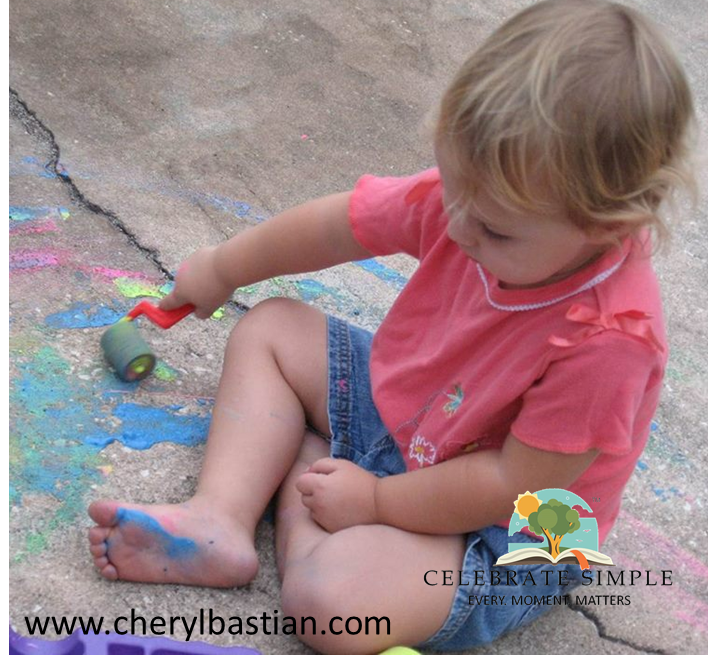High School Credit for Work Experience
/“Can I count my high schooler’s work experience for credit?”
In the course of a week, three parents asked me this question. One in particular came through the Celebrate High School Facebook community.
The answer is multi-faceted, unique to state requirements and learner’s educational and career path.
First, parents must know and understand their responsibilities and freedoms under their state home education statute.
Find out
- Are home educated students in your state required to meet state graduation requirements?
- Does your state statute allow parents to oversee coursework and determine course credit?
- Are parents given the freedom to create titles for courses or must the state DOE titles be used (as is the case with some private schools)?
The answers to those questions will contribute to your decision making process.
The second step in the process of deciding whether or not to award credit for work experience is to determine what the high schooler gained from his or her employment. Life skills? Knowledge? Personal development? The gains vary greatly dependent upon the high schooler's motivation, work ethic, job title, and employment requirements. Again, this is highly individual.
Determine Gains
Conversation with your high schooler is essential in the process of determining the gains. Why? Likely, as with most parents, you are not on the job with your learner to see and hear what he or she encounters or discovers. Engage in discussion. Ask questions. Listen for the young adult's passions, likes, and dislikes without condemnation. Often as young adults process, they need someone to mirror back or clarify what they expressed. I find it helpful to remind myself that when my middle and high schoolers share feelings, they are processing, perhaps sharing thoughts for the first time. The thoughts and feelings shared matter to them and when I ask clarifying questions, they often come to a better understanding of the situation. As you walk the journey with your middle or high schooler, not only will the gains of the current job become known, but the relationship between you and your teen will have great potential for growth as well.
To help determine what skills and knowledge were acquired by the employment--the experiential learning opportunity--consider asking your high schooler:
What skills he or she feels were learned as a result of the work experience?
This is one of those occasions when I encourage parents to make a bullet-point list of skills and content the high schooler learned. Seeing the visual list often clarifies gains and aids in determining a course title which is specific and accurate to the experience. Examples may include Equine Science (barn assistant who interacts with equine professionals, observes or oversees equine care and nutrition), Nutrition and Wellness (assistant to a personal trainer), or String Ensemble (member of string quartet playing for weddings and special events).
Are the skills focused on a specific content area or are the skills broad, focused toward soft skill and personal growth development?
Looking over the content acquired, determine whether the skills were specific to an area of study (paid position at a zoological park) or broad, general and related to successful movement to adulthood (time management, personal growth, and communication skills). The difference may be titling the course Zoological Studies or Personal and Career Development.
Did the high schooler earn accolades, awards, or hold specific leadership roles (positional or managerial titles) associated with the experience?
For example, if your young adult is a shift manager there are likely managerial and leadership skills involved in what he or she does while on site. Perhaps a course title like Managerial Leadership, Leadership Strategies and Techniques, or Exploration in Culinary Management might be suitable.
Our daughter became a self-employed, small business owner in middle school. She continued to build her business through the high school years. Not only did she create and keep track of inventory, she registered her business with the state, filed quarterly sales tax, figured profit and loss statements, kept a running log of sales and inventory, opened a checking account, built a website, handled emails, filled orders, and participated in craft venues. She earned money, but she also gained knowledge and work experience. With integrity, I awarded her one credit in Business and Entrepreneurial Principles.
Our journey of awarding credit for paid work experience hasn’t come without criticism. Yours won’t either. In fact, you may have been told you can’t double dip —count paid work experience as high school credit.
"You can't double dip!"
This happened to me. A well-meaning veteran homeschool mom informed me I couldn’t use work experience for credit. I listened. Yet, as a Mom who has the freedom to oversee our children’s education, knowing the life lessons and knowledge my young adults were gaining in their paid employment opportunities, I set out to research. It just didn't seem right not to be able to obtain credit from such rich, valuable life experience.
Credit Worthy
I discovered my state provides the right for me--as a registered home educator--to oversee the education of my children. In that freedom, I am able to decide what can be deemed credit worthy and I can title mastered content accordingly. I could not ignore the fact that my high schoolers were engaged in learning while on the job. And, with the valuable conversations Mike and I were having with our high schoolers, we knew they were learning content not taught in a traditional textbooks or acquired through lecture. The skills and content they were learning required experience--opportunity to do, decide, make mistakes, and to try again--often under the guidance of a mentor or the supervision of a professional in a career area. In addition, I observed our high schoolers applying what they learned in the work setting to other areas of their lives. They would summarize what they learned on any given day, share their thoughts about what they experienced, and ask questions about things that intrigued them. Our discussions led to discovering deeper life truths as well the building of grit, growth mindset, and personal emotional intelligence—some of the most valuable assets to adulthood and future employment.
What our learners were gaining on the job was credit worthy.
In my mind, the experiences—the content learned while on the job interfacing with professionals—was credit worthy, regardless of whether or not the high schooler was paid. Essentially, the learner was paid to learn!
If life is learning and learning is life-long, it made sense to me that I could confer credit.
Our second son was invited to apply for a summer job as a teacher’s assistant at a preschool. I knew the Director and many of the teachers who worked at the school. In fact, I had worked there as a high schooler and my experience became a catalyst for my choice to pursue early childhood education. Knowing the value of my personal experience, I encouraged our son to apply for the position. Yes, he would earn a paycheck, but he would be mentored by knowledgeable staff who knew the developmental needs of young children.
Art camp began and indeed our son came home each day recounting his experiences. He commented on the conversations teachers had with students, how they listened and responded with open ended questions. He observed as teachers fostered curiosity and intentionally planned activities to promote wonder. His understandings of the developmental stages of art came from comparing preschooler's line drawings and seeing beaming smiles of accomplishment. Learning was experiences, not just memorized facts. In addition, he was learned about classroom management, developmentally appropriate art experiences, and the profession of early childhood education.
The summer came to a close and he was invited to remain on staff for the next school year. He would be the outside assistant--the preschool physical education overseer. He accepted. This change in position brought opportunities to observe the stages of motor development in real life. He watched children progress from running to galloping, from climbing stairs one foot at a time to alternating feet. He knelt down beside children who poured sand in funnels and floated boats in water tables. We talked about discoveries he watched children make and asked me about my experiences with children on the spectrum. The knowledge he gained through his experiences at the preschool were some of the very same things I studied in my college early childhood college courses.
At that moment, I realized the fifteen hours a week he was working at the preschool was preparing him with life skills of time management, communication skills, and workplace etiquette, but it was also equipping him with a foundation of knowledge in the area of early childhood development. In his junior year, I awarded him one credit in Introduction to Early Childhood Education.
Where is your learner employed? Maybe it is the local hardware store where knowledge of tools and home repair are prerequisite for employment. Maybe your high schooler was hired as a shift manager at a local eatery, managing and overseeing a team of co-workers. No matter where your young adult is employed, consider the skills being acquired, the career-related vocabulary being obtained, the decision making involved as part of the job, the conversations being had between coworkers and employers, and subject content being mastered through the opportunity. No doubt much more is being learned than you or your student imagined!
Titles Speak Volumes
Generally high schools title work experience Executive Internship or Work Study. These are broad brush titles which say nothing about the student or content. However, if the home educating parent has the freedom to title courses, course titling can be strategic, mirroring the student’s interest and the content knowledge gained. Here is a small sampling of title examples.
Arts
Creative Photography
Studio Arts
Printmaking
Dance Technique
Dance Performance
Dance Kinesiology
Choreography
Eurhythmics
Music Performance (use specific instrument in titles if appropriate)
Music Ensemble
Jazz Ensemble
Chamber Orchestra
Music Internship
Music Composition and Arrangement
Musical Theater and Production
Music Technology and Sound Engineering
Theater Production
Cinematography
Technical Theater
Set Production
Acting
Theater Management
Print and Broadcast Media
Library Media Services
Journalism
Digital Art Imaging
Digital Media Design
Video Production
Visual Technology
Computer Sciences
Applied Computer and Information Technology
Information Technology
Business and Entrepreneurial
Business Principles
Marketing Strategies
Marketing Principles
Managerial Principles
Health Sciences
Nutrition and Wellness
Food Service
Human Growth and Development
Introduction to Early Childhood Education
Personal and Career Development
Capstone or Cornerstone Projects
Capstone Seminar
Capstone Research
Consider the course titles provided in this blog post about electives.
This blog post is intended to offer an example of personal experience. It is in no way intended to be legal advice and should not be taken as such. Parents own the sole responsibility for the training and education of their children.






















